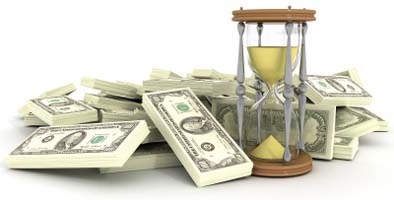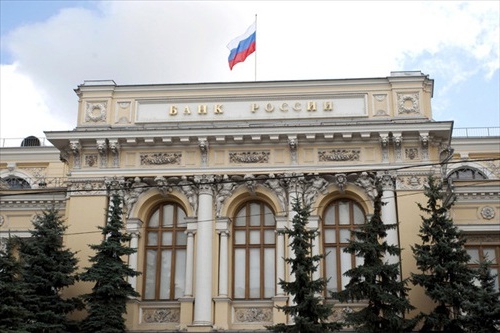To date, the most well-known component of the money supply is cash. This concept combines coins and banknotes, which together are only a small part of the means of circulation. Currently, their current expression is represented by check accounts (demand deposits). They are not tangible materially.
The main reasons for storing cash
It is known that there are four of them, in particular:
- absolute liquidity of this type of medium of circulation;
- ease of use as a means of payment;
- reserve aspect in case of urgent need for financial spending;
- fear of inefficient cash investments.
What are monetary aggregates?
In the modern aspect, they consist of two dominant groups of liquid assets, acting as alternative measures of the entire money supply.

The M1 monetary aggregate is represented by cash and transactional deposits, more precisely, special deposits, the funds on which are available for transfer to third parties as an electronic transfer or payment by check. A significant amount of exchange operations in countries with developed market economies is carried out mainly through the aforementioned aggregate, where money acts as a direct medium of circulation.
What is the second grouping of liquid assets measuring money supply represented by?
The M2 monetary aggregate covers a wider range. In addition to its main function, money in this case also acts as a means of accumulation. The monetary aggregate under consideration includes:
- deposit accounts;
- time deposits;
- demand deposits, etc.
That is, these are assets that have a fixed nominal value and are able to transform into a means of payment. At the same time, they are deprived of the possibility of transfer by other persons and do not give their owner the right to pay by check. As for demand deposits, there is a slight interest income. It is M1 that services certain operations with respect to the implementation of such an indicator as gross domestic product, and also distributes and redistributes national income and much more.
M2 monetary aggregate in the financial markets of developed countries refers to mutual funds money market more precisely, to investment companies issuing their own shares and thereby raising funds, which are subsequently invested in various securities of industrial or other corporations. In general, this unit acts as a liquid means of accumulation.
Savings deposits in commercial banks can be withdrawn at any time and converted into cash. As for term deposits, they become available to the depositor only at the end of a certain period. Thus, they are less liquid (unlike savings deposits).
M3 as a money supply meter
It is represented by less liquid assets, in particular term derivatives agreements, term loans in property titles of money market mutual funds and in eurodollars, as well as certificates of deposit. It can be said that the M3 money aggregate supplements M2 with substantial fixed-term deposits (securities, certificates) that can easily be transformed into check deposits.
What acts as the narrowest measure of money supply?
The M0 monetary aggregate is represented by cash involved in the circulation process, namely:
- metal coins;
- banknotes;
- treasury tickets.
Metal coins provide the ability to make minor transactions. As a rule, they are minted from inexpensive metal. The real valuation differs significantly from the nominal in favor of the latter. This is done in order to prevent the possibility of their remelting into ingots for speculative purposes.

Treasury tickets are paper money, the issue of which is carried out by the Treasury. They are used mainly in underdeveloped countries, for example, in the Republic of Djibouti or the Kingdom of Tonga.
Banknotes occupy a leading position in circulation.
Monetary aggregates in Russia
As you know, money in the framework of the modern economy is not only coins and banknotes representing cash, but also bank checks deposits and other representatives of non-cash form.
Money supply and monetary aggregates are interconnected concepts. The latter follows from the first. This chain is formed due to the fact that the money supply can be represented as a combination of its active and passive parts. The first is cash and non-cash funds that serve the country's economic turnover. The passive part acts as temporarily unused funds in the calculations.
Money supply components have distinctive features by the criterion of speed and ease of their transformation into cash. It is as a result of this distinction that the corresponding monetary groups (monetary aggregates) are formed. In addition, each subsequent unit supplements the previous one, subject to several amendments. In Russia, this allocation is carried out by the Central Bank.
The structure of monetary aggregates in our country has the following form:
- M0 - coins and banknotes involved in the circulation process.
- M1 = M0 + funds in current, settlement and special accounts of companies, household deposits placed in demand banks, funds of insurance companies.
- M2 = M1 + compensation and household urgent bank deposits.
- M3 = M2 + bonds and government loan certificates.

The difference of the above structure from the foreign version of its presentation
In general, monetary aggregates in Russia do not have significant differences with the American classification of these concepts. However, in the USA, as a rule, the M0 aggregate is not allocated, and the M3 has a more detailed differentiation.
Thus, the first group in the United States is represented by cash. The M1 monetary aggregate complements the M0 group with demand deposits, check deposits and traveler's checks. The M2 group, in addition to the above components, includes WFDD shares and term deposits in the range of $ 100 thousand. The M3 aggregate (except for those included in the previous monetary group) consists of time deposits with a face value of over $ 100 thousand, commercial securities. The American structure contains the fifth aggregate (L), which includes, among other things, government securities.
So, we can summarize all of the above and conclude that the money supply and money aggregates are closely intertwined, more precisely, the second concept in aggregate forms the first.
How much money does the economy need to ensure adequate development of the country?

The value of monetary aggregates is calculated in the framework of the classical quantitative economic theory formulated by I. Fisher and A. Marshall. According to her, the value of money is in a certain dependence on their quantitative component.
I. Fisher has formed an equation that reflects the indicated dependence:
M x V = P x Q, where
V is the speed of the alleged circulation of money;
Q is the volume of goods sold;
M - the value of the money supply;
P is the total indicator of commodity prices.
Based on the above formula, you can determine the desired value of the required money supply. It is equal to: M = P x Q: V.
What determines the value of the money supply?
It is associated with three indicators, in particular:
- The price of the total volume of goods produced and offered for sale.
- The average price level in a particular country.
- The velocity of money.
If, for example, the money supply makes one revolution, that is, the incomes of the corresponding economic entities go to purchase goods, and subsequently return in the form of the same incomes back, then one conditional amount of money supply will be required. And then, if she makes not one, but three turns, it will take three times less money. In the case of an increase in the money supply up to limits exceeding the permissible level, inflation sets in.
The concept of liquidity in relation to the considered units
First of all, money acts as a universal measure of the economic value of the corresponding market goods. They are used as a means of payment for any of the goods sold.
Money involves such a thing as liquidity, a property of assets within a market economy. So, any asset can be a means of payment. The difference is only in the costs that are associated with the process of its exchange for the purchased good.
Exchange costs are called transaction costs.
Thus, assets can be classified by liquidity. The leader in this regard, of course, is cash, which has the property of direct exchange with zero costs. The liquid approach is the basis for such a concept as previously considered, as monetary aggregates - a grouping of liquid assets to calculate their total value.
The most liquid assets from the point of view of the Central Bank of Russia are:
- Cash in cash, including cash at the cash desks of commercial banks.
- Funds of commercial banks placed on the corresponding correspondent accounts with the Central Bank.
- Funds for deposit accounts Central Bank.
- Funds of commercial banks held by the Central Bank's required reserve fund.
What are the main functions of money?
There are only three of them, namely:
- medium of exchange;
- a means of accumulating wealth or savings;
- measure of value.
Money and monetary aggregates are two basic concepts that are central to a broader category, such as money supply.
Control over their quantity is carried out by the state in the framework of monetary or monetary policy. As mentioned earlier, this function is assigned to the Central Bank in Russia, and monetary aggregates (M0, M1, M2, M3) act as measuring instruments.
In terms of macroeconomic analysis, groupings M1, M2 are most often used. Also, sometimes a cash indicator such as “quasi-money” is allocated, which has the designation QM and is the difference between the aggregates M2, M1. It is represented by savings and term deposits, therefore, M2 can be expressed as the sum of indicators M1 and QM.
The dynamics of monetary groups depends on a number of reasons, including interest rate movements. Thus, if the rate rises, the aggregates M2, M3 can significantly outperform M1, since their constituent components generate income as a percentage. Recently, the M1 group has begun to include new types of deposits that generate income as interest, and this thereby smooths out the difference in the dynamics of monetary aggregates caused by the movement in the interest rate.
In the framework of Russian statistics, the following narrow interpretations of the main monetary aggregates are used, namely:
- M1 - “money”;
- QM - “quasi-money” - savings and term deposits;
- M2 - "wide money."

